R.E. Kearney's Blog, page 13
July 1, 2021
Florida’s Genetically Engineered Mosquitoes Released
British biotech firm Oxitec has successfully begun its experiment of releasing genetically hacked mosquitoes in open air to reduce the population of disease spreading mosquitoes in the Florida Keys region. According to Oxitec, these genetically engineered mosquitoes can become an alternative to pesticides, reducing and ultimately eliminating the species of disease carrying mosquitoes. But releasing an artificially engineered mosquito species in the air? Naturally, this controversial action came with lots of backlash and protests. Will it even work?
Oxitec’s Aim: Curbing The Aedes aegypti Mosquitoes
The Florida Keys is a strip of islands off the Southern tip of Florida. The Aedes aegypti mosquito species make up about 4% of all the mosquito species of Florida, and this is the species that is responsible for diseases like Zika and Dengue. What is interesting about these insects is that only the female mosquitoes bite; according to Oxitec, they plan to reduce the population of female Aedes aegypti mosquitoes by releasing male Aedes aegypti mosquitoes with an additional OX5034 gene. When these mosquitoes mate with wild female mosquitoes, this artificial gene will pass on to their offspring.
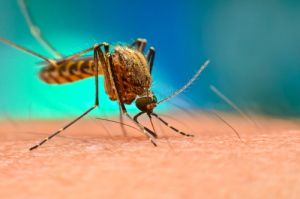
The special characteristic of this gene is that female mosquitoes cannot survive. Hence, only male Aedes aegypti mosquitoes will survive, dramatically reducing the population of biting and disease transmitting female mosquitoes. While this experiment, if it works, may be a great chemical free way to solve the mosquito related diseases problem in Florida, many experts, activists, and locals are sceptical of it.
Controversies Regarding Oxitec’s Experiment
For starters, people have been highly doubtful of the success of Oxitec’s experiment because of the lack of information and proof regarding the method. In fact, Oxitec has been fighting controversies for the past decade, and has only now proceeded to finally release the mosquitoes. The main issue is that Oxitec has no proof that the experiment will even work! Instead of experimenting in controlled lab conditions, they are releasing the genetically hacked mosquitoes in Florida Keys directly. If their idea doesn’t work, that is if the female mosquitoes born from the gene hacked mosquitoes survive, Florida’s mosquito problem will not be solved and instead a new problem will be created; a new species of mosquitoes flying wild in Florida.

But that’s not all; the locals of Florida Keys have also complained that Oxitec has been invading their privacy during the experiments, which, according to them, are not even for the betterment of the community but for Oxitec to test if their methods work. Some citizens have stated that Oxitec employees tricked and bullied them into participating in the experiment, which they did not even agree with after finding out what it actually was.
Activists and experts also disagree with Oxitec sabotaging nature, especially because there have been no caged trials-the company never proved that the trials are even safe! Oxitec has denied any allegations against its project, and is still confident that the experiment will work. Only time can tell whether Oxitec is right or not.
June 24, 2021
Fungus Growth Indicates Life on Mars?
The planet Mars has always thought to harbor life because of its physical similarities, as well as its proximity, to Earth. Yet, no solid evidence of any oxygen-breathing existence has been found on Mars, and the search to discover it continues. On 30th July, 2020, NASA launched the Perseverance Rover, which landed on Mars on 18th February, 2021, to look for any signs of pre-existing life by collecting samples of rock and regolith from the Jezero Crater.
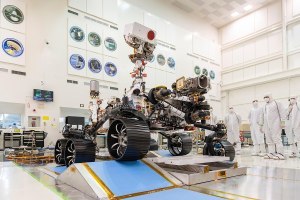
The Jezero Crater is believed to have been a lake at some point in the past, but is now dried up. This mission, titled Mars 2020, is meant to look for any signs of ancient microbial life in this crater. However, a team of researchers seem to be far ahead of the Perseverance Rover, because they claim to have discovered signs of life, far advanced than what the Perseverance Rover is expected to look for.
Fungus on Mars!?
The team of researchers, which released its findings in the Advances in Microbiology journal published by Cambridge University Press, boldly claimed that “Fungus-like Martian specimens” are evident in images taken by NASA’s Opportunity and Curiosity rovers, way before the mission of the Perseverance Rover, the whole point of which is to find life on Mars!
Experts and other researchers are highly critical of this claim, displaying concerns regarding the conditions on Mars which “are unfit for any life to barely survive, let alone thrive”, according to Jonathan Clarke, president of Mars Society Australia. Directly finding a growing fungal organism, like the alleged mushrooms, is hence far from possible. Furthermore, nothing in the images proves that the round ball-like objects were ‘growing’ on Mars; Clarke explained that if you find seashells on the beach, it does not mean that they grew there-the situation seems to mimic this seashell expression rather than being evidence of life on Mars.
The Self Proclaimed Scientist
If this whole scenario doesn’t seem dubious enough, one of the authors of the paper is Rhawn Gabriel Joseph, who is infamous in the field of microbiology and astrophysics for promoting unreliable theories regarding life on other planets; he even went as far as starting his own renegade journal to publish his so-called findings.
This time, he did succeed in getting his paper accepted, yet was not safe from critics who shattered his ideas to pieces because of the unconvincing evidence-his reputation does not help either. According to David Flannery, who is part of the NASA Mars 2020 team and a lecturer at the Queensland University of Technology, “We have more than photos, records, instruments that tell us what these materials [in the images] are made of.” There is no evidence at all which even implies that the images captured on Mars display mushrooms or any life forms for that matter.
It is indeed true, and perplexing nonetheless, that a paper stating that Mushrooms have been found to grow on Mars exists; yet, as experts have already stated, it will be difficult for anyone to take these findings seriously because of their dubious nature.
June 17, 2021
Clean Energy in The United States
One of the goals announced by the Biden administration has been to fight climate change and produce 30 gigawatts of offshore wind energy by 2030. Recently, a large-scale project called ‘Vineyard Wind’, to be built off the coast of Massachusetts, has been given its final approval to become The United States’ first commercial scale offshore wind farm.
A Cleaner Energy Alternative
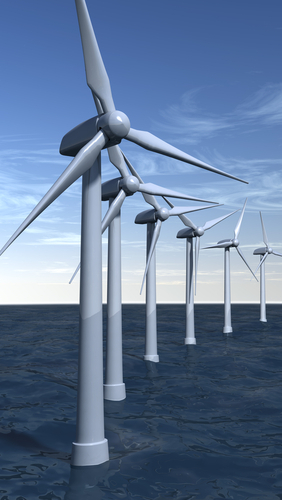
This idea of a large-scale offshore wind farm is not a new one; it was conceived about 20 years ago, but kept on being opposed and delayed and was ultimately cancelled by the Trump administration. After Biden took the presidential seat, he revived the project in March this year as a part of his plans to control climate change and save the environment.
The project, which is a joint venture of the energy firms Avangrid Renewables and Copenhagen Infrastructure Partners, is meant to build 84 wind turbines about 12 nautical miles off the coast of Martha Vineyard. According to the New York Times, this $2.8 billion project, Vineyard Wind, would be able to produce 800 megawatts of electricity, which will be enough to power 400,000 homes!
The benefit of this wind farm would be that since it is a renewable source, it will produce clean energy and eliminate a good amount of carbon emissions which are a consequence of burning fossil fuels for energy.
A New Era of Wind Projects-More Jobs?
The approval of Vineyard Wind has opened doors to multiple other wind farm projects, to be taken into consideration. In fact, two small scale wind farms are already operational in the USA, off the coasts of Virginia and Rhode Island. Yet, they produce only 42 megawatts of electricity combined; compared to this, Vineyard Wind is set to produce 800 megawatts of power. The Interior Department is positive that following the expected success of this project, there could be about 2000 more turbines generating wind energy from the coasts of Massachusetts to North Carolina.

Interior Secretary Deb Haaland also stated that this new era of wind farm projects will create economic opportunities, “union jobs”, for Americans. But not everyone is as excited about this idea. For one thing, economists are concerned about the promised jobs related to this project, since most of the manufacturing business for these turbines takes place in Europe. But the administration is positive that companies will soon start manufacturing turbines locally as well, and together, the project will create an estimated 3,600 jobs.
Concerned Fishermen
The fishing industry has also put forward some concerns, especially the fact that fishermen would have difficulty navigating and catching fish near the areas where the turbines are to be built, with the largest turbine reported to be as large as two football fields. Anne Hawkins, executive director of the Responsible Offshore Development Alliance also expressed her distress by stating that the authorities seem to be more interested in “multinational businesses and energy politics than our environment, domestic food sources, or U.S. citizens.”
Nevertheless, the project is expected to begin this summer and become The United States’ first commercial level offshore wind farm, with the prospects of more to follow.
June 10, 2021
Interstellar ‘Hum’
In 1977, NASA launched the Voyager 1 space probe to study space beyond the heliopause, which is the boundary that signifies the separation of the Solar System from interstellar space. Now, Voyager 1 is the most distant human made object ever in space! Ever since it crossed the Solar System to the interstellar medium, it has been providing researchers at the Deep Space Network with interesting data about space that has never been seen before. Interestingly, it recently detected a continuous ‘hum’ in the interstellar medium.
A Constant Hum of Interstellar Gas
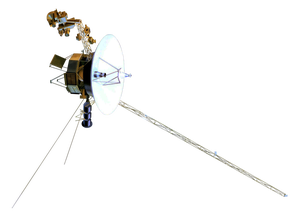
According to research led by Cornell University, the Voyager 1 spacecraft has a Plasma Wave System that detects solar flares produced by the sun caused by a sudden release of energy from the sun’s magnetic field. However, it is interesting that apart from these outbursts, which according to the George Feldstein Professor of Astronomy, James Cordes, are like bursts of lightning in gentle rain, the detector also picked up a very faint but constant ‘hum’ like frequency of plasma waves. While the solar outbursts occur ‘loudly’ for a specific period of time, usually about 10 minutes, these interstellar hums are monotonous and continuous.
Because of the narrow frequency bandwidth, the sound was like a low background hum; but it signifies a shift in gases when the heliopause is crossed, according to Stella Koch Ocker, a Cornell doctoral student in astronomy.
The Heliosphere and The Interstellar Medium
Scientists had previously thought that this activity of interstellar gases, although still very low level, was lesser than what the Voyager 1 made evident. This opened up vast opportunities for researchers to study the plasma distribution in interstellar space, and hence its density. What intrigued astronomers the most is that the density of space is actually higher outside the Solar System than inside it!

This information could help scientists look into how the interstellar medium interacts with the heliosphere, which is a ‘bubble’ formed by the solar winds produced by the sun. Furthermore, scientists are also excited to find out how the shape of the heliosphere is affected not just by the solar winds, but also by the interstellar environment; this will now be possible to learn because of the hum of interstellar gases successfully detected by Voyager 1.
According to Cornell research scientist Shami Chatterjee, this space probe detects the density of space continuously, which becomes an advantage for scientists studying the density of interstellar space because without this data, they would have to wait for the occurrence of a sun related event to measure interstellar plasma. Now, they can obtain this data regardless of when the sun produces solar outbursts, because of Voyager 1, which is still regularly sending data back to Earth at the rate of 160 bits per second, even at a 14 billion mile distance.
May 27, 2021
Mind Control
Remember all the sci-fi movies we watched where our protagonist clad in a smart space-suit would try to control the devices around him with his mind and we were left amazed? Well, in Elon Musk’s world of rapidly-growing technology, it is turning into a real possibility.
The co-founder of Neuralink and the latest mastermind behind every technology, Elon Musk said that his brain interface company will begin its launch with the product that will let users operate the “smartphone with their mind faster than someone using thumbs”. This is especially revolutionary for people with paralysis who will now find it extremely easy to access technology.

Providing a sneak-peak into this plan after the tweets, Neuralink also released a video of a nine-year-old macaque named Pager engaged in a competitive game of Pong using two Neuralink units that were put in its brain six weeks ago.
This revelation could help people with paralysis use the implanted devices to feel more in control of their day-to-day activities and comes as a huge breakthrough.
The device has also opened up discussions around the technology for the visually impaired and Elon Musk says he is not ignorant to those issues either. A fan inquired about their plan for such a device and Musk promptly responded on Twitter saying, “Absolutely doable. Possibly as soon as Neuralink device version 2, highly likely by version 3.”
While it may be some time before Neuralink comes up with the mechanics of sending signals to different parts of a human body, these steps are ensuring steady and rapid growth to make the world a bit smarter every day.
But, how will the device work and what are the ramifications of having it in your brain? However, Musk pointed out that the device will be barely noticeable. “The device is implanted flush with the skull and charges wirelessly, so you look and feel totally normal.”

Right now, we do not have a date for when the tech would be available for public use because, considering the technicalities involved, the health and tech experts would have to work together to see if there are any challenges during the trial period that could potentially put the users at risk.
Even the critics of Elon Musk have praised this initiative and regarded it as an essential step in assisting people with disabilities so that they are also included in all the programs for growth and development in the sector. These plans serve as a long-term investment as they hint towards more meaningful goals for the future of human kind rather than prioritizing the fastest car in the world or finding life beyond Earth, the kind of projects that hold little or no practical value in the life of an average human being.
May 20, 2021
Mixed Species Embryos
Finding human organ donors for transplant is a matter of grave concern worldwide. Thousands of patients succumb to death waiting in line for organ donors. For years scientists have struggled to find alternatives and have chiefly resorted to stem-cell research hoping to grow human organs in animals such as sheep and pigs. However, the approach has not reaped any fruitful results so far.
Recently, however, scientists from various international institutes have attempted to create mixed-species embryos by injecting stem cells from humans into macaque (monkey) embryos. Monkey embryos are mainly used for this purpose because monkeys are genetically the closest to the human species.
[image error]Scientists injected 25 induced pluripotent stem cells from humans into 132 macaque embryos. The embryos were each 6-days old. All cells survived and grew inside the 132 embryos in the first 24 hours. After a lapse of 10 days, 29 embryos expired leaving only 103 chimeric embryos behind. By the 19th day, all except 3 chimeric embryos died, which too were terminated.
Researchers have marked this a great victory and believe that the rate the human cells grew inside the monkey embryos for the first 24 hours is remarkable and could be a great breakthrough in genetic engineering.
“This knowledge will allow us to go back now and try to re-engineer these pathways that are successful for allowing appropriate development of human cells in these other animals,” Juan Carlos Izpisua Belmonte, a genetics professor at the Salk Institute for Biological Sciences in La Jolla, California, and co-author of the study told NPR.
“We are very, very excited,” he added.
“Our goal is not to generate any new organism, any monster,” Belmonte told the broadcaster. “We are trying to understand how cells from different organisms communicate with one another.
All these experiments have led to promising results, as pointed out by the researchers.
Integration of the cells was not a challenge, but the survival was proving to be difficult so eventually the researchers investigated some new ways to conduct screening for drugs. This assisted in generating transplantable cells, tissues, and even organs.
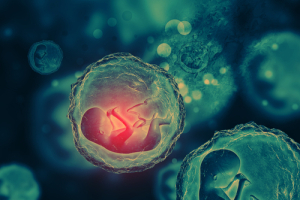
Even though the idea is serving as a major breakthrough in the world of genetics, the experiment has already been tried before but with little success. In 2017, some scientists designed human-pig chimeras by introducing human cells into pig embryos. The cells were then incubated for a period of four weeks and just when they thought it would work, the number of cells grown proved to be insufficient.
This is why the researchers focused on producing a higher rate of growth.
The experiment does raise questions on ethicacy. “My first question is: Why?” research fellow at Rice University’s Baker Institute Kirstin Matthews told NPR. “I think the public is going to be concerned, and I am as well, that we’re just kind of pushing forward with science without having a proper conversation about what we should or should not do.”
May 13, 2021
Weaponizing Space
The competition between the world superpowers to dominate each other with nuclear weapons is something that makes headlines almost every week. Making its mark in the world of science and tech, China is now posing to be a threat to these powers, especially the US.

Recently, the US Intelligence community has warned the world about China making space weapons to increase its hold and terrorize the US. It has labeled the Asian giant as “the top threat” to the US in space and has accused the Chinese government of manufacturing weapons that could be used outside of Earth to threaten the superpower.
The Office of the Director of National Intelligence (ODNI) published a new Global Risk Assessment report which highlights a huge increase in China’s military and commercial activities in the planet’s orbit. One of the primary concerns raised in the report is that China has developed the weapons to shoot down other satellites with missiles or disable them with high-speed lasers, according to Defence News Analysis. This points towards an extremely specialized industry and expertise of the Chinese military that might result in a potential danger to the US, which by far is the country that dominates space.
The threat of China as a potential contender for colonizing space has challenged the global order which was previously dominated by the US and the USSR. Right now, the US is the sole global authority in the world but by the use of well-planned economic, military and social reforms, China seems all set for world domination.
According to Defence News, ODNI Director Avril Haines told lawmakers, “I think there’s just no question, as a general matter, that China is focused on achieving leadership in space and has been working hard on a variety of different efforts in this area to try to contest what has been presumed our leadership.”
China has upped its game in science and tech and is making great investments in research and development. Even with a global pandemic that originated in the country, it has managed to pull itself out of the economic crisis and is adding a significant amount to the world GDP.
So with an impressive growth rate, China will be ready to construct its next space station in orbit quite soon and even though it is not a military action that threatens any state in particular, it is a statement on its own that the country is ready to compete with other superpowers. The International Space Station is going to retire soon and the United States is making a strong case to the committees about preventing Chinese supremacy that could potentially change the whole global order in favor of the East.
May 6, 2021
Human Reproduction
Scientists warn that the world might become infertile by 2045 if we continue at the current rate. The last decade has seen multiple warnings and threats being issued regarding the fertility of the youth by the researchers and experts who have blamed artificial products for the rapid decrease.

Right now, environmentalists have categorized the use of plastic as one of the most dangerous practices observed globally that is assisting the process of declining fertility.
The Guardian published research conducted in 2017 by Shanna Swan, a professor of environmental medicine and public health at Mount Sinai’s Icahn School of Medicine in New York City about the fertility rate. The findings of the study focused on the sperm count among men in Western Countries and it was discovered that it had dropped by more than 50 percent over the last 40 years. 3 years later, Swan published a book titled Count Down that provides a detailed insight into how and why humans are not being able to procreate as efficiently as before.
“People are recognizing we have a reproductive health crisis, but they say it’s because of delayed childbearing, choice or lifestyle – it can’t be chemical,” Swan said to the Guardian. “I want people to recognize it can. I am not saying other factors aren’t involved. But I am saying chemicals play a major causal role.”
Furthermore, the Human Reproduction Update also released a study in 2017 that highlighted how the sperm concentration in men fell from 99 million per ml in 1973 to 47.1 million per ml in 2011. When you look at the statistics, you see a sharp decline of 53.4% in the sperm count in the western countries namely Australia, North America, Europe, New Zealand etc.
Swan, who has studied this issue profoundly says that one of the reasons for this steep fall is the chemicals that “interfere with or mimic the body’s sex hormones”.
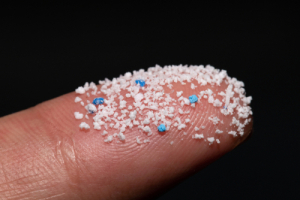
“Phthalates, used to make plastic soft and flexible, are of paramount concern,” Swan said. “They are in everybody and we are probably primarily exposed through food as we use soft plastic in food manufacture, processing and packaging.” She further added that “They lower testosterone and so have the strongest influences on the male side, for example diminishing sperm count, though they are bad for women, too, shown to decrease libido and increase risk of early puberty, premature ovarian failure, miscarriage and premature birth.”
The solution to this problem is not quite simple. It has taken years and years of damage for the researchers to notice the significant decline in the fertility rate so it is not an issue you can get prescribed medicines for. Swan, along with other researchers considers it a threat to humanity because if the trend continues then the world would have fewer and fewer human beings by the end of 2045.
“The current state of reproductive affairs can’t continue much longer without threatening human survival,” Swan writes in Count Down. She says that we need a complete overhaul of the chemical industry to reassess which products are actively harming the reproductive growth rate and people at least need to be warned about the consequences of the consumption of plastic.
April 29, 2021
DNA Mutation
While quantum physics deals with the study of bizarre behavior or matter on a subatomic level, scientists since the early 1920s have looked at how the quantum mechanics play a role in the living cells, thus introducing Quantum Biology, a relatively new field putting nuclear physicists, biochemists and molecular biologists together to understand the behavior of living cells at a DNA level.
A research paper published early 2021 in the journal, Physical Chemistry Chemical Physics suggested that an unusual quantum phenomenon could be causing point mutations in the DNA structures.

Scientists at the University of Surrey’s Leverhulme Quantum Biology Doctoral Training Center used computer simulations and various quantum mechanical methods to study proton tunneling, a purely quantum phenomenon which occurs on the hydrogen bonds linking together the spiraling DNA stands.
Proton tunneling is when a proton from the hydrogen atom vanishes from one spot and reappears elsewhere. This can cause the atoms to occasionally be found on the wrong strand of DNA thus causing point mutations in the genetic code.
Even though these genetic mutations are usually short lived, and the DNA molecules readjust to their real order in a reasonable short amount of time, the scientists believe that some of these mutations could survive the DNA replication process inside the cells and possibly cause health consequences thus increasing the risk of cancer.
In a press release issued by the team of researchers, the lead author of the research Marco Sacchi said that many had long suspected that the quantum world which is weird, counter-intuitive, and wonderful plays a role in life as we know it. While the idea that something can be present in two places at the same time might be absurd to many of us, this happens all the time in the quantum world, and our study confirms that quantum tunneling also happens in DNA at room temperature.”

The scientists believe that quantum biology has a long way to go and there’s a lot more left for scientists to understand when it comes to studying the biological processes at a subatomic level, however, this recent research by the scientists at University of Surrey has proven the point that quantum mechanics are definitely at play on a biological level.
The co-author of the study and co-director of the Leverhulme Quantum Biology Doctoral Training Center, Jim Al Khalili, said that it has been thrilling to work with this group of young, diverse and talented thinkers – made up of a broad coalition of the scientific world. This work cements quantum biology as the most exciting field of scientific research in the 21st century.
Other scientists not involved in the study directly have labeled it as a massive step towards understanding quantum biology however, they believe that a much more improved computing power and methodology will be required to model entire DNA strands.
April 22, 2021
Faster Than Light Travel
Are you fascinated by Star Trek’s famous superluminal spacecraft propulsion system, the Warp Drive? The one that would enable space crafts to travel faster than light? Guess what? Scientists have finally come up with theories grounded in conventional physics that might just make FTL travel through a warp drive possible!
In a new bombshell dropped by astrophysicist Dr. Erik Lentz of Germany’s Gottingen University, bending the fabric of space and time to the will of scientists is quite possible. Lentz introduced the first theoretical design of Warp Drive grounded in the concepts of conventional physics which will allow scientists to overcome the vast expanse between humans and stars and making Faster-Than-Light (FTL) travel quite possible.

Lentz’s theory published in the peer-reviewed journal, Classical and Quantum Gravity, reimagined the shape of the warp space thus overcoming the dependence on exotic materials as suggested in models suggested by scientists previously.
“The suggested theory has opened up new dimensions for studies of FTL travel moving it a step away from theoretical physics and closer to engineering,” said Lentz in a statement.
The Warp drive concept is quite fascinating to scientists and researchers particularly because if the concept really comes to life, it will enable humans to travel to the Alpha Centauri, the nearest star system, in 3 years or less. If a usual modern rocket were to travel the same distance, it will take more than 50,000 years, and thus practically impossible.
While the fictional star trek model of FTL Warp Drive worked by the collision of matter and antimatter generating explosive energy which would be used to propel the space ship faster than the speed of light, the idea was no more than fiction.
In 1994, physicist Miguel Alcubierre proposed a Warp Drive model which is known as the Alcubierre Drive. In his research paper abstract, Miguel wrote, “by a purely local expansion of spacetime behind the spaceship and an opposite contraction in front of it, motion faster than the speed of light as seen by observers outside the disturbed region is possible.”
The idea of Alcubierre was based on expanding massive amounts of energy, however, particle physics knows of no such mechanism capable of creating this amount of negative energy.
Lentz’s paper suggests a new method of warp drive, one that isn’t dependent on exotic matter. In his research he discovered spacetime bubbles, taking the shape of solitons, which the scientists working previously had overlooked.

Applying the same Einstein’s equations of general relativity for various configurations of solitons, Lentz was able to finally find one equation that could work with conventional energy resources and didn’t need negative energy.
“The next step is to figure out how to bring down the astronomical amount of energy needed to within the range of today’s technologies, such as a large modern nuclear fission power plant. Then we can talk about building the first prototypes,” Lentz said.



